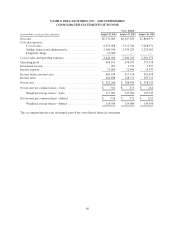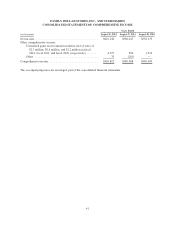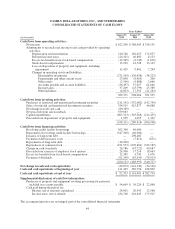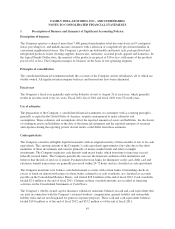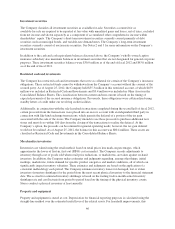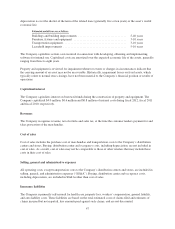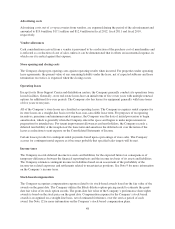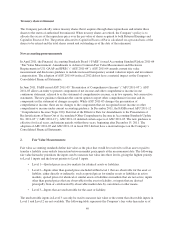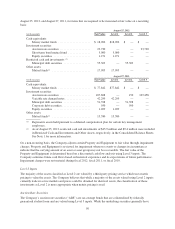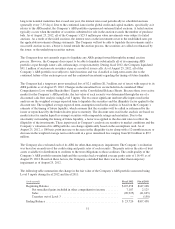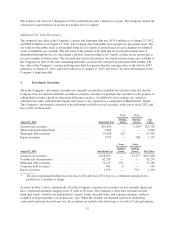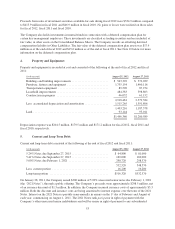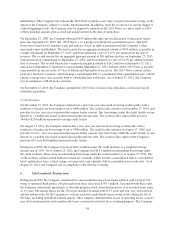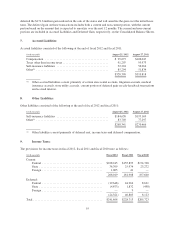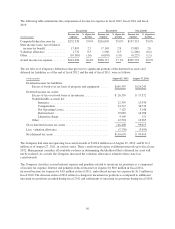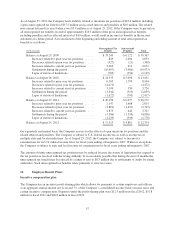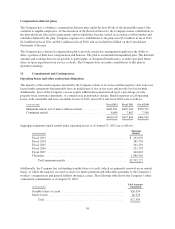Family Dollar 2012 Annual Report Download - page 52
Download and view the complete annual report
Please find page 52 of the 2012 Family Dollar annual report below. You can navigate through the pages in the report by either clicking on the pages listed below, or by using the keyword search tool below to find specific information within the annual report.Advertising costs
Advertising costs, net of co-op recoveries from vendors, are expensed during the period of the advertisement and
amounted to $19.6 million, $17.1 million and $12.4 million in fiscal 2012, fiscal 2011 and fiscal 2010,
respectively.
Vendor allowances
Cash consideration received from a vendor is presumed to be a reduction of the purchase cost of merchandise and
is reflected as a reduction of cost of sales, unless it can be demonstrated that it offsets an incremental expense, in
which case it is netted against that expense.
Store opening and closing costs
The Company charges pre-opening costs against operating results when incurred. For properties under operating
lease agreements, the present value of any remaining liability under the lease, net of expected sublease and lease
termination recoveries, is expensed when the closing occurs.
Operating leases
Except for its Store Support Center and distribution centers, the Company generally conducts its operations from
leased facilities. Generally, store real estate leases have an initial term of five or ten years with multiple renewal
options for additional five-year periods. The Company also has leases for equipment generally with lease terms
of five years to ten years.
All of the Company’s store leases are classified as operating leases. The Company recognizes rental expense for
its store leases on a straight-line basis over the base, non-cancelable lease term. For purposes of recognizing
incentives, premiums and minimum rental expenses, the Company uses the date of initial possession to begin
amortization, which is generally when the Company enters the space and begins to make improvements in
preparation for intended use. For tenant improvement allowances and rent holidays, the Company records a
deferred rent liability at the inception of the lease term and amortizes the deferred rent over the terms of the
leases as reductions to rent expense on the Consolidated Statements of Income.
Certain leases provide for contingent rental payments based upon a percentage of store sales. The Company
accrues for contingent rental expense as it becomes probable that specified sales targets will be met.
Income taxes
The Company records deferred income tax assets and liabilities for the expected future tax consequences of
temporary differences between the financial reporting basis and the income tax basis of its assets and liabilities.
The Company estimates contingent income tax liabilities based on an assessment of the probability of the
income-tax-related exposures and settlements related to uncertain tax positions. See Note 9 for more information
on the Company’s income taxes.
Stock-based compensation
The Company recognizes compensation expense related to its stock-based awards based on the fair value of the
awards on the grant date. The Company utilizes the Black-Scholes option-pricing model to estimate the grant-
date fair value of its stock option awards. The grant-date fair value of the Company’s performance share rights
awards is based on the stock price on the grant date. Compensation expense for the Company’s stock-based
awards is recognized on a straight-line basis, net of estimated forfeitures, over the service period of each
award. See Note 12 for more information on the Company’s stock-based compensation plans.
48




